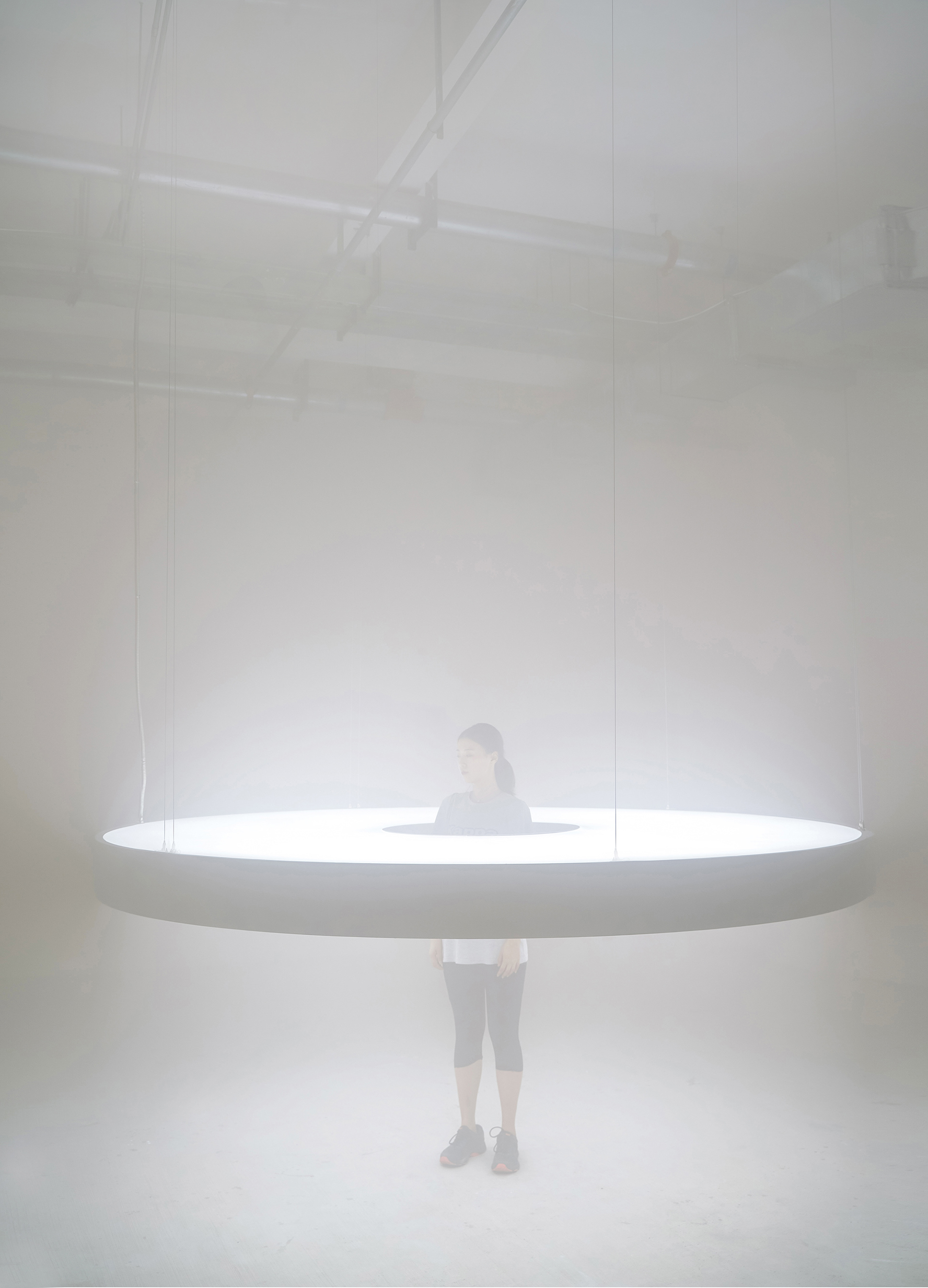____________________________
ITA - ENG
JUNE 2020
Karolina Halatek is visual artist from Poland, who creates installations where light is the protagonist. In the environments she creates, sculpture, architecture and installation intersect creating an experience in which the public, entering inside, becomes an integral part.
Website: http://karolinahalatek.com
All images © courtesy of Karolina Halatek
_______________________________
How did you come to realize this kind of works? Why did you choose to use the light?
I chose light because it is the most essential and the most powerful visual element we can perceive. We all depend on light, it is a life-force and it's simply stunning. There is no visual art without light, so I decided to concrete on the source. Already in high school, I knew that I want to dedicate my education to the medium of light, that's why I choose the art college where I could explore it. As the subject is quite specific I had to move to London, where step by step I was developing my spatial and ephemeral interests. Still, realizing those complex and technically very demanding projects I see as a miraculous process.
How are the ideas for your works born? What inspires you?
Usually, the ideas come from my own concentration on the experience of space that is somehow outwardly. I'm inspired by visions of the afterlife, visions of saints, by the supernatural.
One of my projects Terminal was inspired by the testimonies of people who had a near-death experience. Also, the sky has been always an object of my admiration and incomprehensible fascination. I'm attracted to the sublime aspects of light, intangible atmospheres that evoke a sense of presence.


How do you see art today and how do you feel it is seen by other people?
Thanks to the internet, today everyone who wants can have unlimited access to see an immense variety of art, which I consider a great thing. However, seeing art only on-screen is reductive and often leads to missing the point. Art has a lot to do with finding the right expression through the very thoughtful use of the materials, the computer or phone screen will never provide an experience of contemplation or sensual engagement. I feel that people today are still very keen to see the unexpected but contemporary art should be exciting enough and properly promoted. As the visual digital content overwhelms our generation like never before I would put a strong emphasis on art education and demand more attention to understanding the value of art.
What do you want to express with your works? Do you think people understand their meaning?
The artwork doesn't need to be rationalized, it's good to feel it. I don't expect people to understand my works, however often in a conversation, the viewer describes the conceptual aspects that I have imprinted in the piece which is really surprising. Perceiving the artwork always depends on the individual sensibility. I'm aware that people are not aware of my points of reference that are mostly spiritual but I prefer when people create their own ideas and have the space to think for themselves.
How do you think your art will evolve over the years?
The Spirit blows where it wills. I would like to keep open and flexible as much as possible.
Do you believe that your art is connected to this historical period? Would it have worked in the past?
I often wonder about past civilizations that had a very significant connection to the light.
Light holds a timeless quality, it's been present in the past and it will be present in the future, light art has the advantage to cross the barriers of the time and the art categories from a particular period in the history. However, the art I do is strongly connected to the times we live today. The technologies and the materials available nowadays allows me to create very particular art pieces that were out of the production reach in the past centuries.


When do you feel the most creative?
When I'm relaxed.
In one of your interviews I read how important the presence of the public is for you. How do you live the realization of the photos and videos as a documentation or rather as a real performance?
The documentation plays tremendous importance in my practice. Often my artworks are temporary and after the exhibition period they just get disabled, so I can no longer see them. That's why I always look after proper documentation and usually do it myself. I'm trained as a photographer and also grew up in a family of photographers and filmmakers, I know what has to remain in the image to express the nature of the work. As my installations have a participatory character and are designed for the open interaction, the people's reaction is often a key to understand the work. With the viewers' works become alive, the scale and the context become clearer.
I read that the inspiration for the work Halo was born by a sensation during intercessory
prayer. In your works there is often a religious sense perhaps given also by the silence that
often accompanies them. Is it an important element in your works?
prayer. In your works there is often a religious sense perhaps given also by the silence that
often accompanies them. Is it an important element in your works?
Silence is the key to the stillness that enables the viewers to become present in a moment.
It gives a possibility for a reflection, contemplation and sensing peace, which is a today's deficiency. The simplicity and purity of the light can release the tension generated by a hectic and overstimulated lifestyle, it can bring back the attention inward where the sense of self can be restored and newly discovered.

